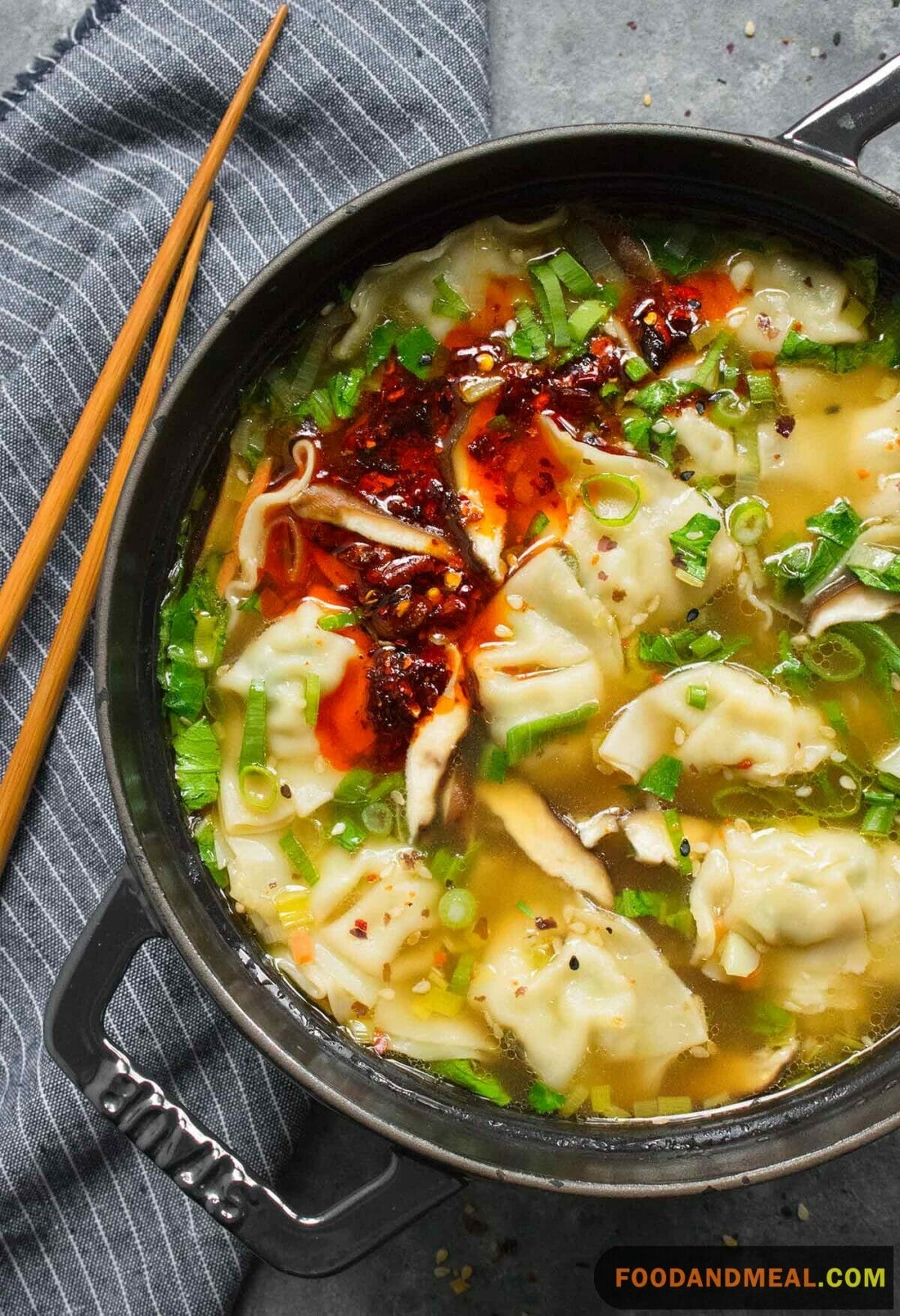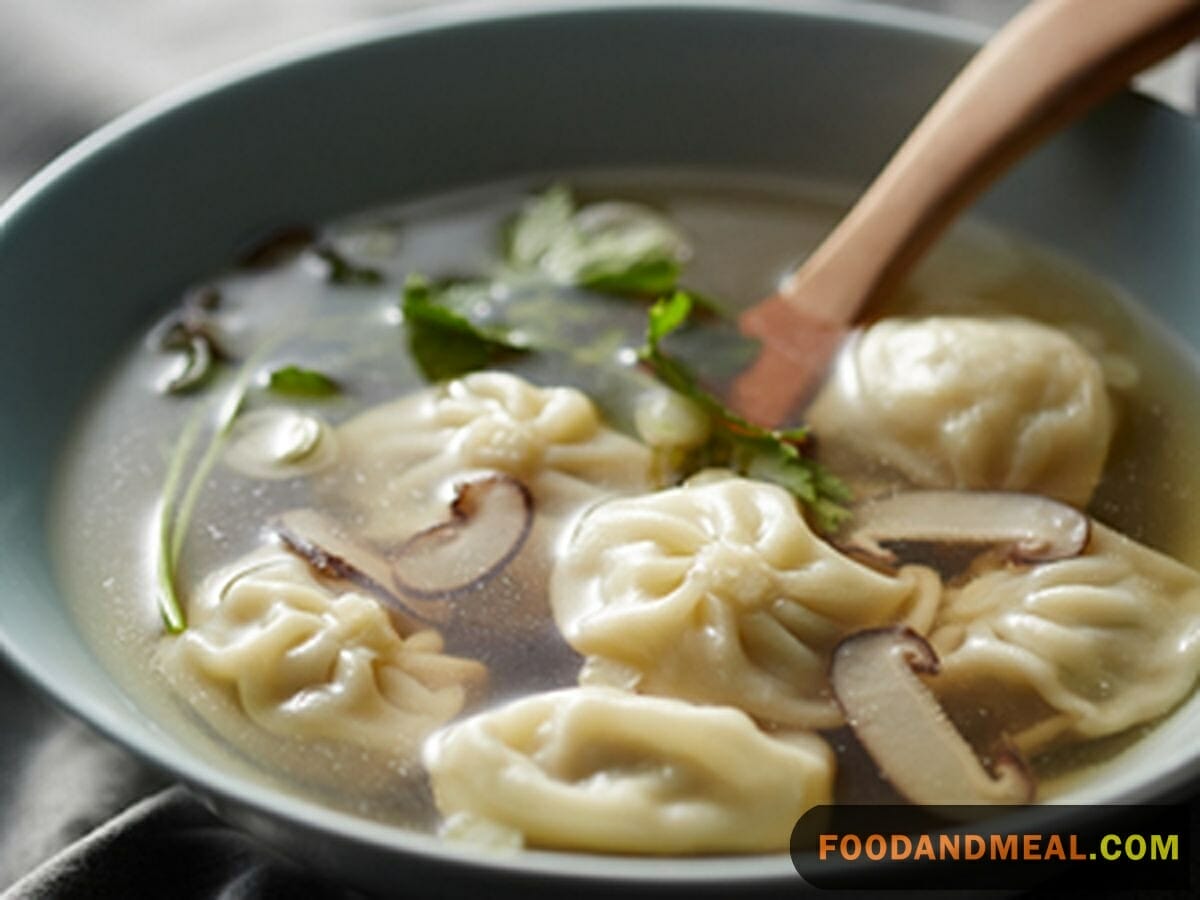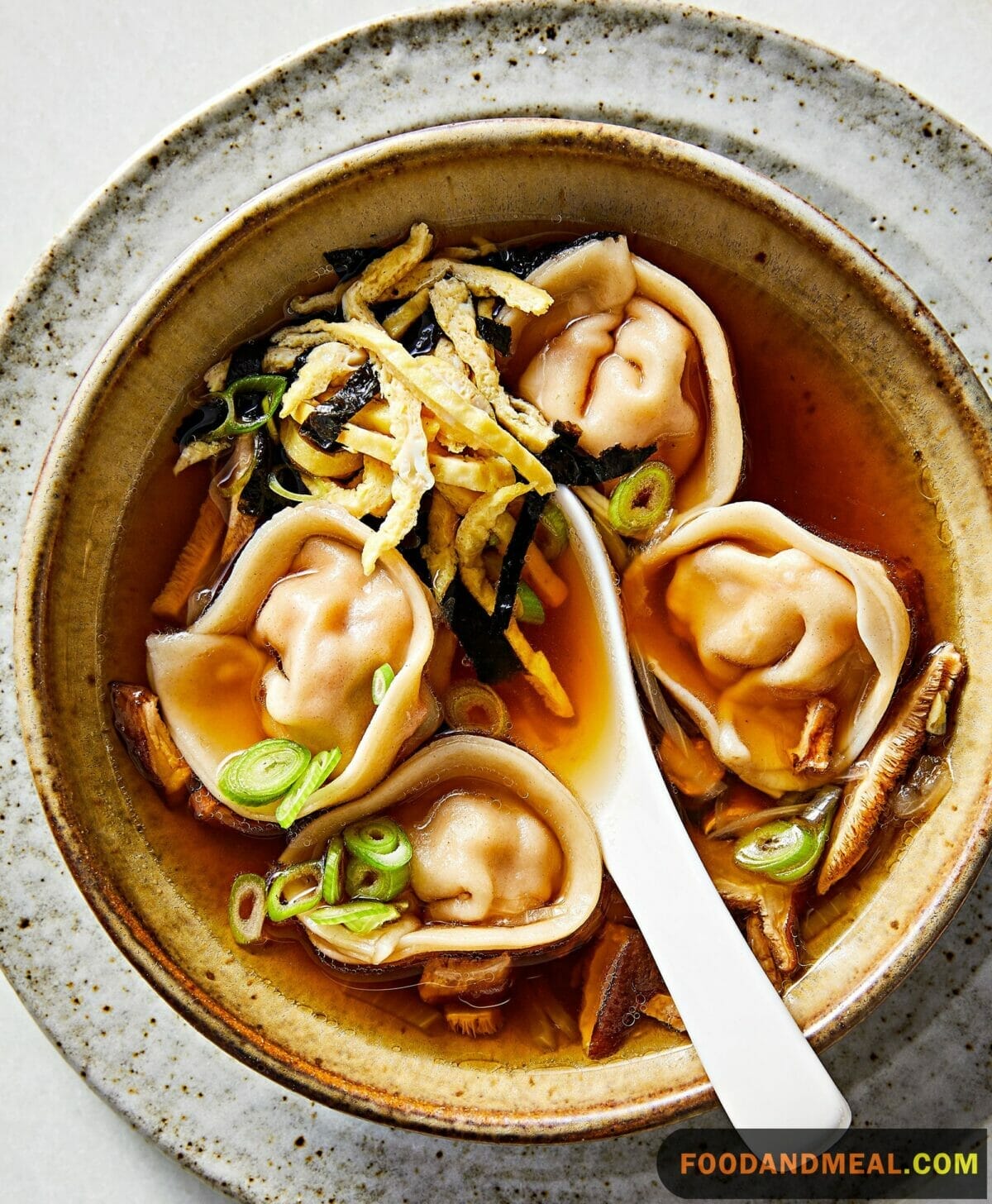Sui-Gyoza Soup is one of the most popular winter dishes in Japan. This delicious Japanese Pot Sticker Soup is filled with vegetables. Gyoza is a Japanese term for dumplings or potstickers. There are many variations of the dish. You can buy boiled or pan-fried gyoza, or boiled or deep-fried ones. You can also find this delicious soup in China. It will make you wonder why you haven’t tried it sooner.
Japanese Pot Sticker Soup Recipes


Sui-Gyoza Soup
Ingredients
- 4 scallions sliced thinly
- 4 oz. mung bean sprouts
- 2 tbsp. parsley flat leaf, chopped
- 2 tbsp. soy sauce reduced sodium
- Sea salt coarse
- Black pepper freshly ground
- 1 lb. chicken gyoza Japanese stuffed wonton wrappers, frozen
- 1 cup peas frozen or fresh
- 3 slices ginger fresh
- 6 cups broth chicken
- 1 cup carrots peeled diced
- 2 tbsp. oil olive
Instructions
- Heat the oil on med. heat in large pot. Add the carrots. Saute until they start to soften. Season using pepper.
- Add ginger and broth to the pot. Raise the heat to high. Bring to boil. Add peas and cook for two minutes. Add the chicken gyoza to the broth. Return to boil and stir in the soy sauce.
- Cook the gyoza until nearly tender to bite. Remove the ginger from the pot. Season as desired. Add parsley and stir. Ladle the soup into individual bowls. Top them each with green onions and bean sprouts. Serve.
Video
Notes
Nutrition
© Food And Meal
This website provides approximate nutrition information for convenience and as a courtesy only. Nutrition data is gathered primarily from the Spoonacular Database, whenever available, or otherwise other online calculators.
Alternative Method: Japanese Pot Sticker Soup in a Slow Cooker

Ingredients:
- 1 pound (450g) ground pork or turkey
- 2 cups of finely shredded Napa cabbage
- 1 cup of sliced shiitake mushrooms
- 1/2 cup of sliced green onions
- 2 cloves of garlic, minced
- 1 tablespoon of freshly grated ginger
- 4 cups of low-sodium chicken broth
- 1/4 cup of soy sauce
- 1 tablespoon of rice vinegar
- 1 tablespoon of sesame oil
- 1/2 teaspoon of chili garlic sauce (adjust to taste)
- 30-40 frozen pot stickers or dumplings
Instructions:
- In a large skillet over medium heat, cook the ground pork or turkey until browned and crumbled. Drain any excess fat and transfer the cooked meat to your slow cooker.
- To the slow cooker, add the finely shredded Napa cabbage, sliced shiitake mushrooms, sliced green onions, minced garlic, and freshly grated ginger.
- Pour in the low-sodium chicken broth, soy sauce, rice vinegar, sesame oil, and chili garlic sauce. Stir the ingredients together in the slow cooker.
- Carefully add the frozen pot stickers or dumplings to the mixture. Stir gently to ensure they are evenly distributed.
- Set your slow cooker to “low” and let the soup simmer for 4-6 hours. This slow cooking time allows the flavors to meld and intensify.
- When you’re ready to serve, ladle the delicious Japanese Pot Sticker Soup into bowls and garnish with extra sliced green onions or a sprinkle of sesame seeds, if desired.
Tips for making Japanese Pot Sticker Soup

Cooking Tips
- Use Quality Pot Stickers: The quality of your pot stickers or dumplings makes a significant difference in the overall flavor of your soup. Opt for high-quality, authentic Asian pot stickers for the best results.
- Brown the Meat Well: When cooking the ground pork or turkey, ensure it’s browned well. This step enhances the depth of flavor in your soup.
- Don’t Overcrowd the Slow Cooker: If you’re using the slow cooker method, avoid overcrowding the cooker. It’s essential to give the ingredients room to simmer and meld their flavors together.
- Adjust Spice Levels: The level of spice can vary depending on personal preferences. Adjust the amount of chili garlic sauce to achieve your desired level of heat.
- Fresh Garnishes: To brighten up your soup, use fresh garnishes like sliced green onions, cilantro, or a squeeze of fresh lime. These add a burst of flavor and freshness.
Serving Suggestions

- Sides: Serve the soup with a side of steamed jasmine rice or a light cucumber salad for a satisfying meal.
- Garnishes: Garnish each bowl with a generous sprinkle of chopped fresh cilantro, sliced green onions, and a drizzle of toasted sesame oil.
- Beverages: Pair your pot sticker soup with a cold Japanese green tea or a light lager beer for a refreshing contrast to the savory flavors.
- Fresh Lime: Provide lime wedges at the table. Squeezing a bit of fresh lime juice into your bowl adds a zesty kick.
- Sriracha Sauce: For those who love extra heat, offer a side of sriracha sauce to drizzle on top.
Frequently Asked Questions about Japanese Pot Sticker Soup
- Can I freeze the soup with pot stickers? Yes, you can freeze the soup with pot stickers. However, keep in mind that the texture of the pot stickers may change slightly upon reheating. When ready to enjoy, thaw and reheat gently to preserve their quality.
- How do I store leftovers? Leftovers can be stored in an airtight container in the refrigerator for up to 2-3 days. Reheat on the stovetop or in the microwave, adding extra broth if needed.
- Are there vegetarian pot sticker options? Absolutely! Many stores offer vegetarian or vegan pot stickers made with tofu, vegetables, or other meat alternatives. Use these for a meatless version of this soup.
- Can I use fresh pot stickers instead of frozen? Yes, you can use fresh pot stickers instead of frozen. Adjust the cooking time slightly, as fresh pot stickers tend to cook faster.
- Can I make the soup in advance for a party? Certainly! You can prepare the soup in advance and reheat it when needed. Just remember to store the pot stickers separately to prevent them from getting too soft.
Indulge in the flavors of Japan with our Japanese Pot Sticker Soup recipe. Discover tips, serving suggestions, and answers to FAQs. Subscribe for more culinary inspiration.
I'm James F Anderson, a noted sous chef from London and a Le Cordon Bleu alumnus. My career began in a Michelin-starred Parisian eatery, where my blend of classic and contemporary cooking, using seasonal ingredients, earned accolades. Recognized in culinary publications and on cooking shows, I’m committed to mentoring aspiring chefs and delivering memorable dining experiences, marking me as a standout talent in the culinary world.


